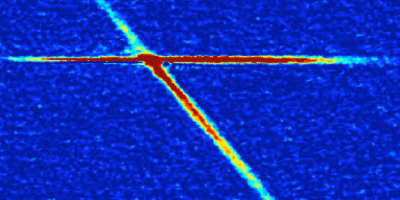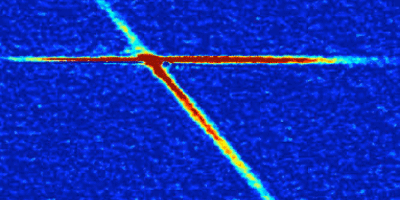Splitting Matter Waves with Light
Beam splitters exist for matter waves just as for light waves. However, physicists cannot yet manipulate beams of matter as well as beams of light. A novel matter-beam splitter based on crossed lasers provides new control knobs over the matter waves. As described in Physical Review Letters, the researchers can turn the splitting of a beam on and off by tuning the laser power.
In the last decade, researchers have used various types of splitters to send beams of cold atoms down different paths and then interfere them. The small wavelength of matter waves gives atomic interferometry the potential to probe fundamental questions of gravity and quantum mechanics.
To help realize this potential, Giovanni Luca Gattobigio of the CNRS and the University of Paul Sabatier in Toulouse, France, and his colleagues devised a new matter-beam splitter. Like some previous designs, theirs uses lasers as waveguides, or conduits, to control the path of matter waves. One difference is that this new device works for a range of different beam “temperatures,” which are characterized by the degree of transverse excitations in the beam. The researchers crossed two lasers at an angle of 45 degrees (forming an X) and released a beam of rubidium atoms down one laser arm. By changing the second laser’s power, the team controlled the beam’s behavior at the crossing point. The beam went straight at low power, while it deflected into a different arm at high power. At intermediate power, the beam split into all four arms of the X. Theoretical modeling showed that this splitting was due to chaotic scattering. – Michael Schirber





